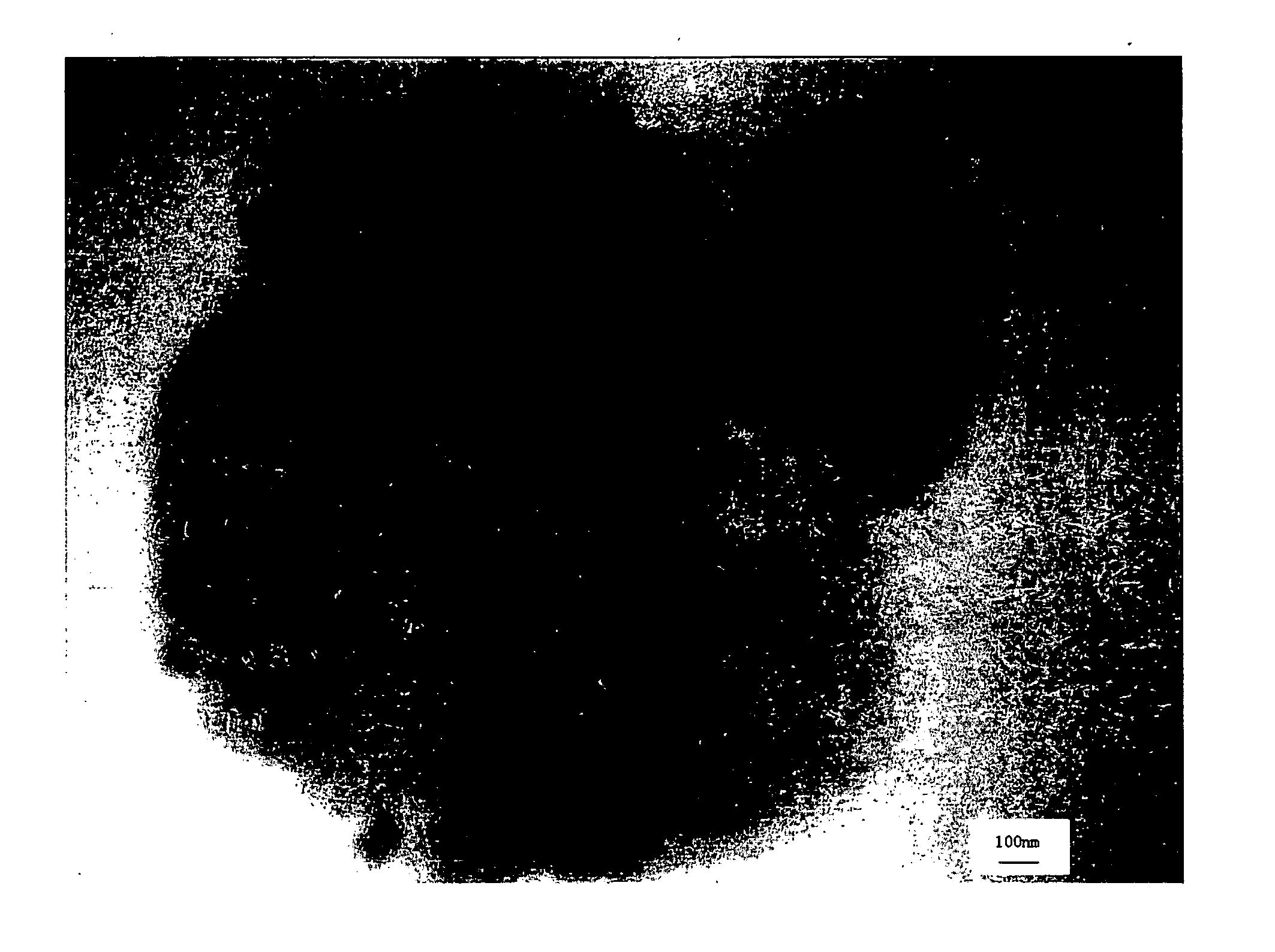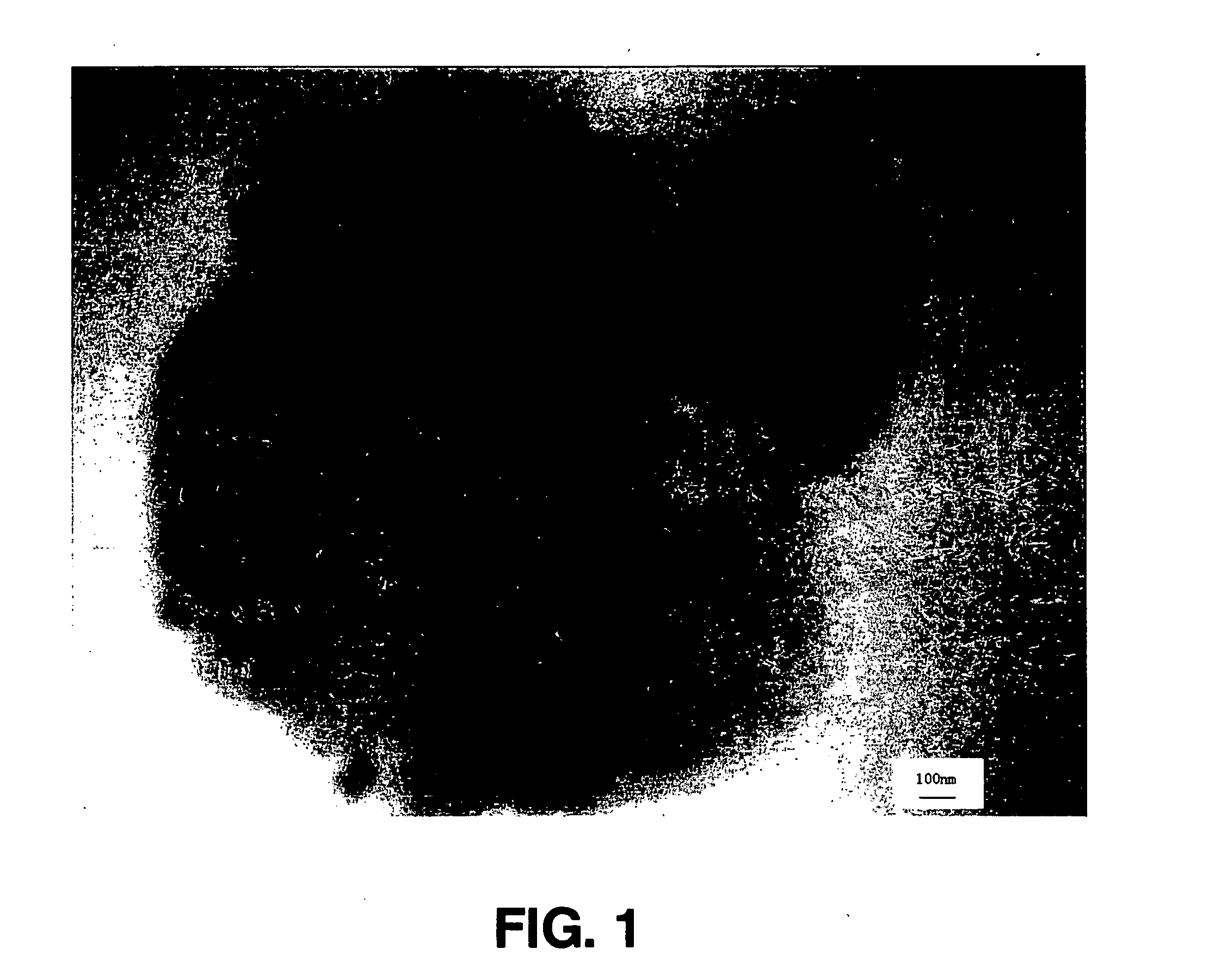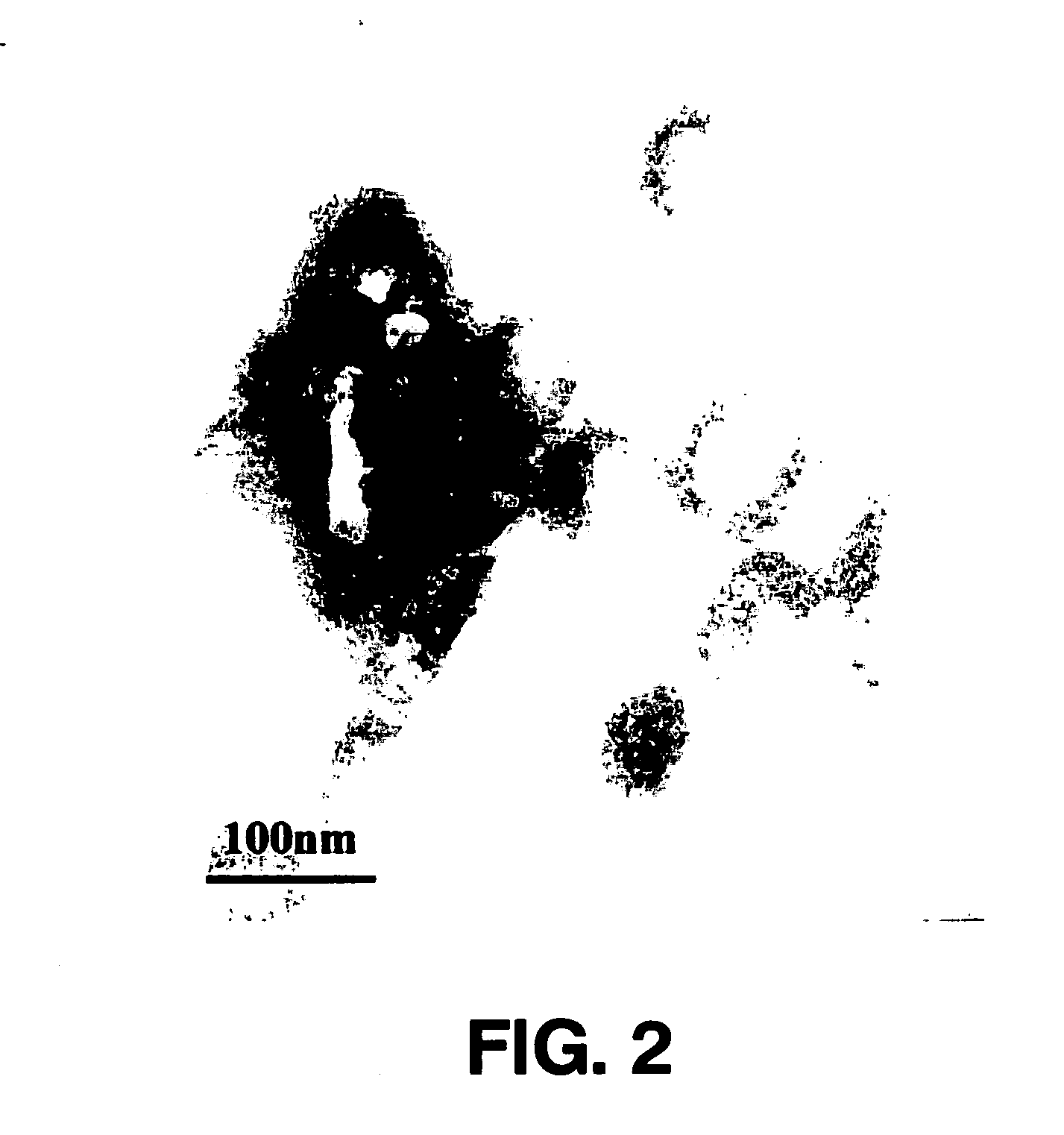Composite powder, preparation and use thereof
a technology of composite powder and powder, which is applied in the field of composite powder, can solve the problems of reducing the modulus and thermal properties of plastics, unable to enter the gaps of unable to exfoliate sheet clay in a nanometric scale, so as to maintain the strength and modulus and thermal properties, and improve the toughening effect
- Summary
- Abstract
- Description
- Claims
- Application Information
AI Technical Summary
Benefits of technology
Problems solved by technology
Method used
Image
Examples
example 1
[0052] 5 kg of carboxylated butadiene-styrene rubber latex having a solid content of 50 percent by weight(available from Beijing Yanshan Petrochemical Company, Brand: XSBRL-54B1, average particle size of the rubber particles in latex: 150 nm) is placed in a vessel, 75 g of iso-octyl acrylate is added dropwise while stirring, and the stirring is continued for 1 hour after the completion of addition. Thereafter, the rubber latex is irradiated with Co-60, with the irradiation dose being 2.5 Mrad and the irradiation dose rate being 50 Gy / min. The rubber particles in the irradiated latex have a gel content of 92.6%. A slurry of calcium carbonate(Fine Chemical Factory of Beijing University of Chemical Technology, solid content: 47.3%, average size in one dimension of the particles: 40 to 60 nm) is compounded with the irradiated latex at a weight ratio of 50:50 (on dry basis) while stirring for 1 hour. The mixed latex is spray dried by means of a spray dryer, with the inlet temperature and...
example 2
[0053] 500 kg of calcium carbonate powders(Fine Chemical Factory of Beijing University of Chemical Technology, average size in one dimension of the particles: 40 to 60 nm) are mixed with 1 kg water in a vessel, the resultant mixture is then dispersed by means of a high-shear dispersing and emulsifying machine to obtain a suspension, which is then compounded with the irradiated carboxylated butadiene-styrene rubber latex(prepared as in Example 1) at a weight ratio of 50:50 (on dry basis) while stirring for 1 hour. The mixed latex is spray dried by means of a spray dryer, with the inlet temperature and the outlet temperature being 140 to 160° C. and 40 to 60° C., respectively. A dried carboxylated butadiene-styrene rubber / calcium carbonate composite powder 2 is then collected in a cyclone.
example 3
[0054] 5 kg of butadiene-styrene rubber latex having a solid content of 45 percent by weight(available from Lanzhou Petrochemical Company, Brand: DINGBEN-50, gel content: 88.9%, average particle size of the rubber particles in latex: 100 nm) is placed in a vessel, 67.5 g of iso-octyl acrylate is added dropwise while stirring, and the stirring is continued for 1 hour after the completion of addition. Thereafter, the rubber latex is irradiated with Co-60, with the irradiation dose being 2.5 Mrad and the irradiation dose rate being 50 Gy / min. The rubber particles in the irradiated latex have a gel content of 90.0%. A slurry of calcium carbonate(as in Example 1) is compounded with the irradiated latex at a weight ratio of 90:10 (on dry basis) while stirring for 1 hour. The mixed latex is spray dried by means of a spray dryer, with the inlet temperature and the outlet temperature being 140 to 160° C. and 40 to 60° C., respectively. A dried butadiene-styrene rubber / calcium carbonate compo...
PUM
| Property | Measurement | Unit |
|---|---|---|
| size | aaaaa | aaaaa |
| size | aaaaa | aaaaa |
| particle size | aaaaa | aaaaa |
Abstract
Description
Claims
Application Information
 Login to View More
Login to View More - R&D
- Intellectual Property
- Life Sciences
- Materials
- Tech Scout
- Unparalleled Data Quality
- Higher Quality Content
- 60% Fewer Hallucinations
Browse by: Latest US Patents, China's latest patents, Technical Efficacy Thesaurus, Application Domain, Technology Topic, Popular Technical Reports.
© 2025 PatSnap. All rights reserved.Legal|Privacy policy|Modern Slavery Act Transparency Statement|Sitemap|About US| Contact US: help@patsnap.com



